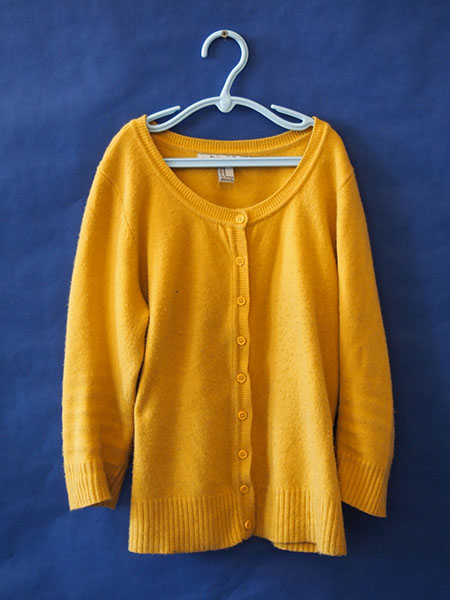![]() body | color | collections | commodity | cube | document | fabric | fetish | gender | glass | home | identity | living | machine | metal | minimal | mobility | narrative | olfactory | organic |
body | color | collections | commodity | cube | document | fabric | fetish | gender | glass | home | identity | living | machine | metal | minimal | mobility | narrative | olfactory | organic |
![]() pain | paper | plastic | plugs | power | protective | rectangular | ritual | round | sound | souvenir | spiritual | style | text-based | time | tool | touch | uniform | value | visual | warm | wood
pain | paper | plastic | plugs | power | protective | rectangular | ritual | round | sound | souvenir | spiritual | style | text-based | time | tool | touch | uniform | value | visual | warm | wood
| Clothing: Mustard Yellow Button Up Sweater | |||
Narrative: Forever 21
The polymer is formed by free-radical polymerization in aqueous suspension. The fiber is produced by dissolving the polymer in a solvent such as N,N-dimethylformamide or aqueous sodium thiocyanate, metering it through a multi-hole spinnerette and coagulating the resultant filaments in an aqueous solution of the same solvent (wet spinning) or evaporating the solvent in a stream of heated inert gas (dry spinning). Washing, stretching, drying and crimping complete the processing. Acrylic fibers are produced in a range of deniers, typically from 0.9 to 15, as cut staple or as a 500,000 to 1 million filament tow. End uses include sweaters, hats, hand-knitting yarns, socks, rugs, awnings, boat covers, and upholstery; the fiber is also used as "PAN" precursor for carbon fiber. Production of acrylic fibers is centered in the Far East, Turkey, India, Mexico, and South America, though a number of European producers still continue to operate, including Dralon and Fisipe. US producers have ended production, though acrylic tow and staple are still spun into yarns in the USA.
|
 |
||
![]()
